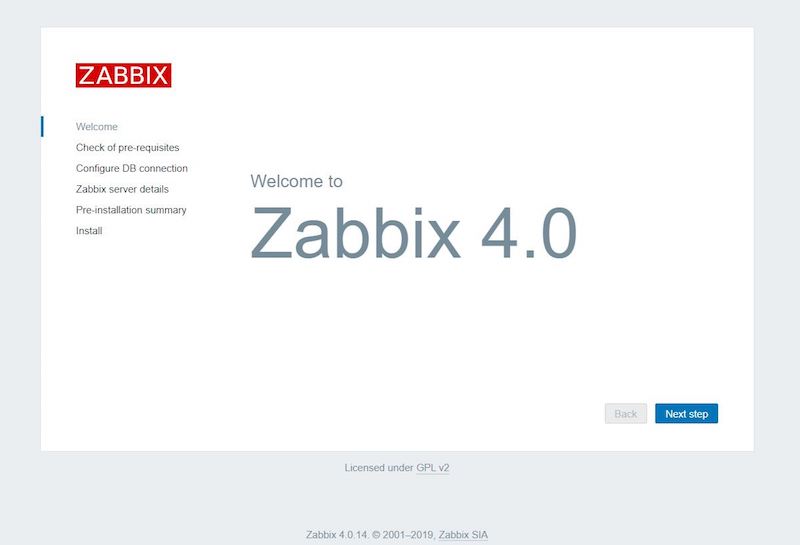
In this tutorial, we will show you how to install Zabbix on your CentOS 8. For those of you who didn’t know, Zabbix is an open-source monitoring tool that is ideal for monitoring your cloud servers. Zabbix is very flexible, information can be retrieved using HTTP/SNMP or by installing a Zabbix agent on the machines to monitor, and allows a lot of customization.
This article assumes you have at least basic knowledge of Linux, know how to use the shell, and most importantly, you host your site on your own VPS. The installation is quite simple and assumes you are running in the root account, if not you may need to add ‘sudo‘ to the commands to get root privileges. I will show you the step-by-step installation of Zabbix on a CentOS 8 server.
Prerequisites
- A server running one of the following operating systems: CentOS 8.
- It’s recommended that you use a fresh OS install to prevent any potential issues.
- A
non-root sudo useror access to theroot user. We recommend acting as anon-root sudo user, however, as you can harm your system if you’re not careful when acting as the root.
Install Zabbix on CentOS 8
Step 1. First, let’s start by ensuring your system is up-to-date.
sudo dnf update
Step 2. Install LAMP server.
A CentOS 8 LAMP server is required. If you do not have LAMP installed, you can follow our guide here.
Step 3. Installing Zabbix on CentOS 8.
Zabbix packages are not available in the base CentOS repository. So, to get Zabbix packages, we need to install the Zabbix repository configuration package:
rpm -Uvh https://repo.zabbix.com/zabbix/4.4/rhel/8/x86_64/zabbix-release-4.4-1.el8.noarch.rpm
After adding the Zabbix repository to your system, Now update package lists and install Zabbix using commands:
sudo dnf install -y zabbix-server-mysql zabbix-web-mysql zabbix-agent zabbix-apache-conf
Step 4. Configure MariaDB for Zabbix.
By default, MariaDB is not hardened. You can secure MariaDB using the mysql_secure_installation script. you should read and below each step carefully which will set a root password, remove anonymous users, disallow remote root login, and remove the test database and access to secure MariaDB.
mysql_secure_installation
Next, we will need to log in to the MariaDB console and create a database for Zabbix. Run the following command:
mysql -u root -p
This will prompt you for a password, so enter your MariaDB root password and hit Enter. Once you are logged in to your database server you need to create a database for the Zabbix software:
MariaDB [(none)]> create database zabbixdb character set utf8 collate utf8_bin; MariaDB [(none)]> grant all privileges on zabbixdb.* to zabbixuser@localhost identified by 'password'; MariaDB [(none)]> flush privileges; MariaDB [(none)]> exit
Now that the database and user are ready, initial import schema and data into it.
cd /usr/share/doc/zabbix-server-mysql/ zcat create.sql.gz | mysql -u zabbixuser -p zabbixdb
Next, edit the Zabbix server configuration file:
nano /etc/zabbix/zabbix_server.conf
................................... DBHost=localhost DBName=zabbixdb DBUser=zabbixuser DBPassword=password ...................................
Save and close the file. Start/Restart Zabbix and httpd services and make them start automatically on every reboot:
sudo systemctl restart zabbix-server zabbix-agent httpd php-fpm sudo systemctl enable zabbix-server zabbix-agent httpd mariadb
Step 5. Configure Firewall.
Configure the firewall to allow the Zabbix agent to reach the Zabbix server:
firewall-cmd --permanent --add-port=10050/tcp firewall-cmd --permanent --add-port=10051/tcp firewall-cmd --permanent --add-port=80/tcp firewall-cmd --reload
Step 6. Accessing Zabbix.
Zabbix will be available on HTTP port 80 by default. Open your favorite browser and navigate to http://your-domain.com/zabbix or http://server-ip/zabbix and complete the required steps to finish the installation.

Congratulations! You have successfully installed Zabbix. Thanks for using this tutorial for installing Zabbix Monitoring Tool on your CentOS 8 system. For additional help or useful information, we recommend you check the official Zabbix website.